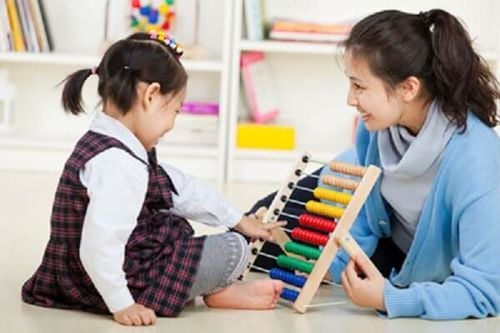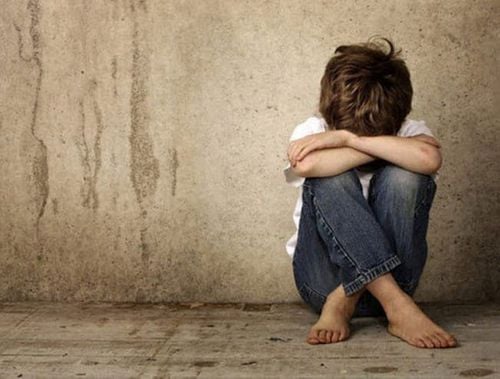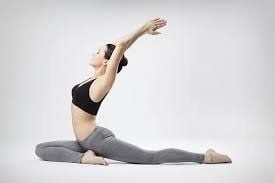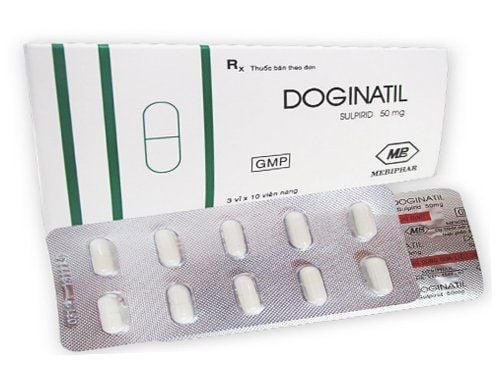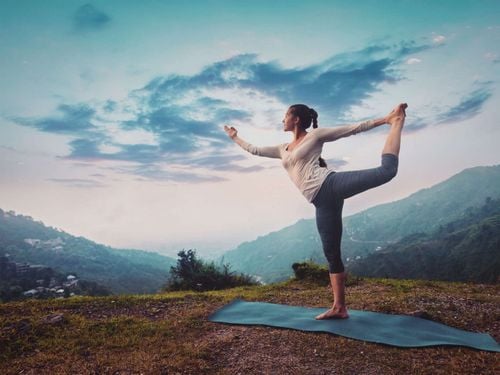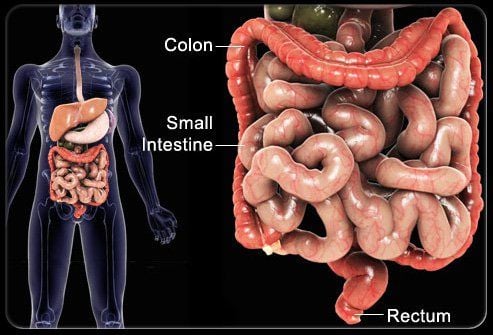This is an automatically translated article.
Article by Bachelor's Degree Meditation - Yoga Specialist - Unit of Regenerative Medicine Clinic and Educational Psychology - Center of Regenerative Medicine and Cell Therapy at Vinmec Times International General Hospital City.
The rate of diagnosis of children with autism in recent years tends to increase with the frequency of 1/100 children, of which typical autism accounts for 16.8%. Common manifestations in children with autism include defects in 3 areas: limited social interaction skills, poor communication and abnormal behavior. In addition, children often have sensory disturbances, some children have difficulty controlling behavior and disordered motor coordination skills. The following article learns about motor skills disorders in children with autism - Manifestations and intervention methods.
1. What is advocacy coordination?
Motor coordination is the conscious process of the brain's goal-directed response based on sensory to environmental information to perform various actions in sequence related to routine activities.
In children with motor coordination disorder, the child is confused at one or several steps needed to move, causing difficulties in many activities. The word “Praxis” means a complex set of steps the brain and body need to take to get something done.
Praxis relies on an efficient sensory system. Difficulty with praxis is often a sign of sensory processing problems. Praxis is not something you will take or not; we use praxis more when we do a new activity and less when we have done it millions of times.
Sensory systems related to Praxis such as:
Sense of joints and muscles (Motion system) Balance and movement (Vestibular) Touch and feel (Tactile) Hearing (Hearing) Seeing (Hearing) Sight) Taste (Taste) Smell (Smell) Examples of different types of sensory information that humans perceive through the senses. The flow of information a child receives from his or her surroundings influences all of a child's daily activities including mealtime.
Example: Children's sensory experiences during mealtimes and senses involved:
Light in the room => Seeing (Visual) Food placed in colored bowls => Seeing (Visual) Noise from other children in the dining room => Hearing (Hearing) How the child feels when sitting in the high chair or eating position => Touch/Feel (Tactile) How the caregiver smiles at the child when feeding Children eat => Seeing (Visual) The smell of food when brought near the child's mouth => Smell (Smell) Taste of food and drink in the child's mouth => Tasting (Taste) The texture of the food feels received when children put food in their mouths or children feel with their hands when touching food themselves => Touch/Feel (Tactile) Feeling of an empty stomach before eating or feeling of fullness after a child has finished a meal Eat => Feel the inside of the body (Intrasensory) Praxis includes the following steps:
Idea generation: Simply put, it is knowing what to do and having an idea of how to do it. This is a step you usually do when you're playing games, when you're about to do or even think about complex movements, especially new ones - for example, learning a new dance. Planning: This is the process your brain and body go through to decide what to do – for example, how to move your legs in a new dance. This process works during activity because the brain and body are constantly tweaking the plan in response to new information, like what your dancing partner's feet are doing or the beat of the music. Often when people talk about the term motor planning, they are referring to the entire praxis process. Actually planning the movements is the second step of the praxis process. Execution: is the body's ability to act on the ideas and plans that have come to mind. Performance depends on the amount of extensive communication between the brain's motor cortex and the muscles — for example, rhythmically moving limbs to a new dance. Feedback mechanism: evaluate the results of the action that has just occurred based on the feedback mechanism, forming a body map and a spatial map. The experience of movement is stored in memory. Problem solving: the body evaluates the results of the action that has just taken place, adjusts the action, and discovers a new plan. Facilitates the creation of patterns in the head, allowing the brain to anticipate the effects of an action. Determining the sequence: after receiving feedback and forming a spatial map, the body integrates conscious and unconscious processes, plans actions, and determines the sequence of actions over time, in relation to each other. space map.
2. Neuromotor disorders in children.
Dyspraxia is the name for a lack of coordination, also known as a movement disorder in children. Children often develop the ability to perform simple activities, such as sitting, walking and talking in stages. However, having a neuromotor disorder causes the baby to lack the coordination between mind and body to carry out activities as planned. For example, when a baby thinks about getting up and walking, but the brain doesn't send the right signals to the body to perform these actions
3. Characteristics of movement disorders in children.
Children with motor coordination difficulties often have the following characteristics: Fine motor difficulties with crafts, art, scissors, and writing Gross motor difficulties, such as throwing, kicking, or catching the ball, or jumping with both feet Difficulty in activities that require two-way coordination (using both hands at the same time in one activity) Reluctance or unwillingness to try new activities Claims to be last engaging in familiar or new motor activities Acts like a class clown who always falls or stomps Has difficulty making imitations in games such as “Simon says” Fails to make movements Proficient in following verbal instructions Likely to fall and have accidents Difficulty performing personal hygiene on their own. Difficulty in activities requiring balance and motor types Poor memory, difficulty organizing and following instructions Slow development of speaking, listening and playing mind games imagine. Difficulty interacting with peers. Very sensitive to noise, light, etc. Has a tendency to bump into other children. Easily entangled in the feet Often slow to learn, prone to ADHD or dyslexia.
4. Support movement disorders in children.
Currently, there is no specific method to treat neuromotor disorders in children. However, mothers can apply some methods to improve their children's condition as follows:
Increase physical exercise. Physical education helps children practice coordination skills and effective communication between the brain and body parts. Teach your child some sports like cycling or swimming to help him improve his motor skills. Playing team sports helps children develop social skills. In addition, daily exercise can reduce the risk of obesity in children.
Assign specific “tasks” to children. It helps baby to do regular activities easily. Physical therapy exercises can teach your baby techniques to perform simple as well as difficult tasks, monitor his progress, and guide him step-by-step towards an independent life.
Give your baby bigger tasks: This involves regular activities that strengthen baby's motor skills. You can observe your baby's progress on tasks that were previously difficult for him to complete.
Exercises with senses and coordination of movement on both sides of the body. Improve body sensation: whole-body movements (integrating tactile, somatosensory and vestibular. Do motor exercises or yoga movements involving both sides of the body. Take advantage of joint exercises. related to locomotion in space Using activities that involve mirror cells
5. Yoga exercises to support movement disorders.
For children with autism, regular yoga practice can help increase their self-confidence, while developing their motor skills, social skills, and inner self-awareness. In addition, deep breathing exercises along with gentle movements will also help children control agitation. Not only that, these are also movements that coordinate different limbs on the body, coordinate on the same side or on the other side, improving the gross motor difficulties that autistic children are experiencing. The calming and quietness of yoga practice also helps to eliminate unpleasant stimuli such as loud noises, bright lights, strong smells.... This helps the child's sensitive nervous system to be less prone to outbursts. Here are some poses that parents can practice with their children at home
Cow Face Pose How to do Cow Face Pose
Sit up straight, extend your legs in front of you Gently bend your left leg and go around your right buttock Bend right foot and place it on the left thigh. Fix the position of the knees of the 2 legs on top of each other. Slowly bend the left hand, circle behind the back Reach the right hand over the shoulder and fold it back, try to stretch so that the hands are touch each other behind. After a while of practice, you can easily interlock your hands behind your back. Keep your body straight, facing forward, open your chest. Hold the pose for a period of time when you feel comfortable, your breath is light and deep. Focus on the breath. Release and switch sides With this position, when children perform, it is necessary to flexibly coordinate both hands to perform movements, improving the difficulty in coordination in motor development in children with autism.
Cow - cat pose:
Support yourself with hands and knees, align so that the wrists are below the shoulders and the knees are below the hips. At this point, the spine will be a straight line connecting the shoulders to the hips. Pinch the toes. Push your butt up high, back as low as possible, open chest. Keep your head up towards the ceiling without moving your neck.
Balance table pose:
Place both hands in front with palms on the mat, fingers facing forward. Lift yourself up and support with your palms and knees. Adjust and bring your palms down directly below your shoulders. Adjust and bring the knees in line below the hips. As well as the ankle in line with the knee. Inhale as you lift your right leg up and back and your left arm forward so that both arm and leg are parallel to the ground. Breathe normally and stay in this position for as long as you feel comfortable. To relax, bring your arms back to the mat and at the same time bring your right foot to the floor and return to a balance table position. Repeat the pose with the left leg raised behind and the right arm out in front. Perform for 50 seconds continuously.
Tree pose:
Start in a standing position, feet together, hands on hips. Put your weight on the left leg, bend the right leg, and place the right foot on the inner thigh of the left leg. You can start from lower points like the ankles, and work up gradually if you are not used to the exercise. Palms facing each other, placed in front of the chest in a prayer position. On an inhale, extend your arms over your shoulders, separating your hands and facing each other. Hold the pose for 30 seconds to 1 minute. Lower down and repeat on the opposite side. Benefits of Tree Pose: Helps balance and coordination, strengthens legs and spine
Stretching Dog Pose:
Start in a crawling position on the mat (palms, knees and toes should touch the mat). Apply force to the inside of the two palms. Inhale deeply, lift your knees off the ground, heels should not touch the ground. Push yourself up slowly, lifting your hips and buttocks up. Exhale, press the chest to the floor, try to straighten the spine, keep the arms straight from the buttocks to the wrists in a straight line. Slowly straighten the leg. Hold this position for 1 minute (or alternate kneeling with the method: 1 side bend 1 side straight for 1 minute). At the end of the movement, slowly return to the starting position in reverse order.
Please dial HOTLINE for more information or register for an appointment HERE. Download MyVinmec app to make appointments faster and to manage your bookings easily.




